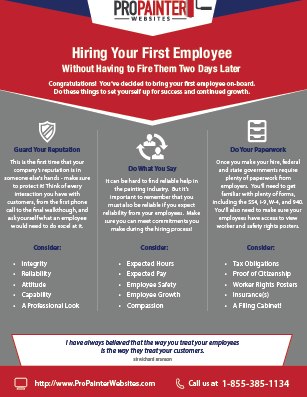Understanding Seasonal Influences On Commercial Exterior Painting: Important Understanding For Success
Understanding Seasonal Influences On Commercial Exterior Painting: Important Understanding For Success
Blog Article
interior house painter Written By-McLamb Urquhart
When you're intending an industrial external painting project, seasonal variables can make or damage your results. You'll want to consider how temperature and humidity effect paint application and drying out times. Choosing the best season can guarantee your paint sticks properly and lasts much longer. However which seasons are absolutely the very best for this kind of job? Allow's explore the key elements that can affect your project's success.
The Effect of Temperature Level on Paint Application
When you're planning a commercial exterior paint project, the temperature can substantially affect how well the paint adheres and dries out.
Preferably, you wish to paint when temperature levels vary in between 50 ° F and 85 ° F. If it's as well cold, the paint might not treat properly, causing problems like peeling off or cracking.
On the other hand, if it's too hot, the paint can dry out too promptly, preventing proper adhesion and resulting in an uneven finish.
You should likewise take into consideration the time of day; early morning or late afternoon uses cooler temperatures, which can be much more favorable.
Constantly check the supplier's suggestions for the details paint you're making use of, as they typically give advice on the ideal temperature level array for optimum outcomes.
Humidity and Its Impact on Drying Times
Temperature isn't the only ecological factor that affects your business outside paint project; humidity plays a considerable duty too. High humidity degrees can slow down drying out times drastically, affecting the general high quality of your paint job.
When the air is filled with wetness, the paint takes longer to heal, which can cause concerns like bad bond and a higher danger of mildew development. If you're painting on a particularly humid day, be prepared for extensive delay times in between layers.
It's vital to keep track of local climate condition and strategy appropriately. Preferably, aim for humidity degrees in between 40% and 70% for optimal drying out.
Maintaining these consider mind guarantees your task stays on track and delivers an enduring finish.
Best Seasons for Commercial Exterior Painting Projects
What's the best time of year for your industrial external painting jobs?
Spring and early loss are usually your best bets. During these periods, temperatures are light, and moisture degrees are frequently lower, creating suitable conditions for paint application and drying out.
Avoid summer season's intense heat, which can create paint to dry also quickly, bring about inadequate attachment and surface. In a similar way, winter months's cool temperature levels can impede proper drying out and treating, risking the longevity of your paint job.
https://www.housedigest.com/1032631/things-to-consider-before-painting-your-home-black/ for days with temperatures in between 50 ° F and 85 ° F for optimum outcomes. Keep in mind to check the regional weather report for rain, as damp problems can wreck your job.
Planning around these variables guarantees your painting project runs smoothly and lasts much longer.
Final thought
In conclusion, preparing your commercial outside painting tasks around seasonal considerations can make a significant difference in the result. By scheduling work throughout the perfect temperature levels and moisture levels, you'll make certain far better attachment and drying out times. Bear in mind to watch on local weather report and select the correct time of year-- springtime and very early loss are your best options. Taking these actions will certainly help you attain a resilient and professional finish that lasts.
